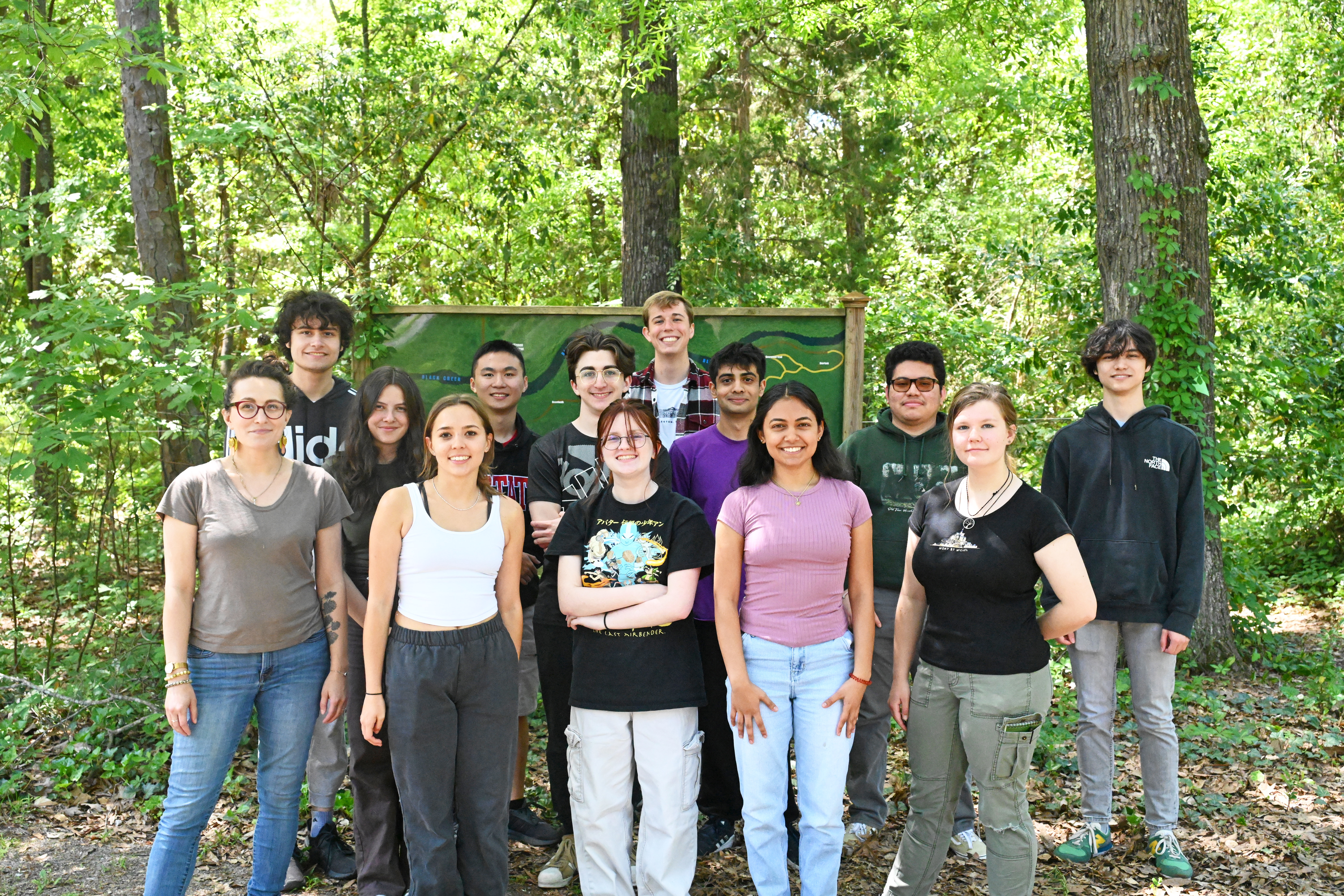Deen's Garden
A RESTORATION ECOLOGY PROJECT
We are a team of 14 students in a Research in Restoration Ecology course taught by Dr. Cara Roberts at the Governor’s School for Science and Mathematics (GSSM). In this first iteration of this course we are initiating a research project that is planned to span across multiple years. We are excited to help restore this little plot of land next to the Joslin Education Center at Kalmia Gardens, which we’ve named “Deen’s Garden”.

What We're Up To...
Restoration ecology entails renewing and restoring ecosystems that were damaged or degraded by human activity. The Deen’s Garden site at Kalmia Gardens is bordered by the Joslin Education Center, a walking path, and Carolina Avenue, which connects to a number of nearby residential neighborhoods.
This leaves the area highly exposed to disturbance and human activity. As a result, several invasive species (exotic species that outcompete beneficial native species) have been introduced and the populations of some aggressive native species (fast growing natives that can outcompete other native species) have increased significantly. This has led to a perceived decline in native biodiversity, which is compromising the ecosystem services this community can support (e.g. habitat and forage for wildlife).
In other words, invasive and aggressive native species (which we’ve deemed “undesirable species") within the plot are using up resources that more rare, desirable native species need, meaning they cannot grow and thrive there.
This is the first year of the GSSM research class restoration ecology. Our team is collecting data that will allow us to quantify the current biodiversity of Deen’s Garden so we can develop an effective restoration strategy. We will also use this data to track how diversity changes throughout our restoration project.
This project will be continued each year by a new group of students enrolled in the class. Incoming students will continue restoration efforts and monitor our plot over the course of 5+ years to see how our work influences the native biodiversity and ecosystem services provided by this region and whether our approach allows native plant species to thrive.
Restoration Goals & Timeline
Overarching Objective: To restore and revitalize the Deen’s Garden area in Kalmia Gardens by increasing functional biodiversity (i.e. the ability of species present to provide vital ecosystem services) through increasing the abundance of desirable native species.
Near-Term Goal: Our primary goal for this semester is to conduct fieldwork and quantitative analyses to serve as accurate baseline data that will perform three functions:
- To assess, quantitatively and qualitatively, which species pose the greatest threat in each plot
- To identify and quantify which desirable natives are present and what degree these species are thriving or struggling
- To serve as a reference-point for future research in Deen’s Garden.
Upon completion of this goal, we will use this data to inform a restoration strategy towards our five-year goal and, time-permitting, begin work towards our five-year goal.
Deen Five-Year Plan: To increase functional biodiversity within Deen’s Garden through the safe and deliberate removal of invasive and/or aggressive flora (i.e. our undesirable species) and to maintain careful and persistent in-the-field observations to monitor our progress and adjust our restoration methods as necessary.
